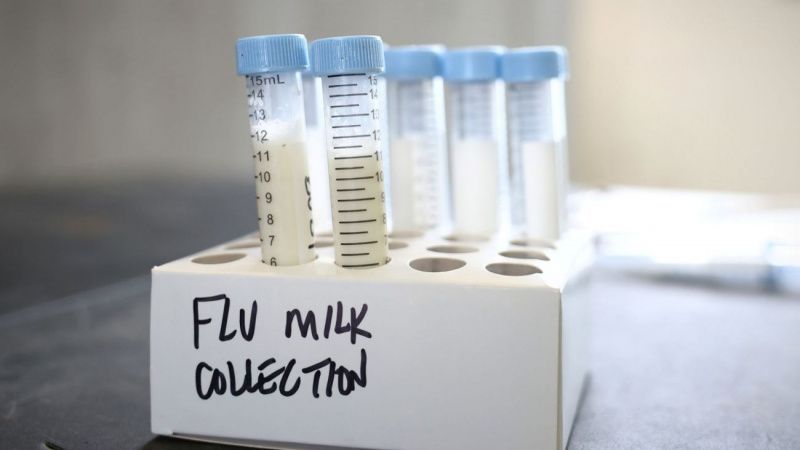Avian Flu’s New Frontier: A Second Strain Reaches U.S. Dairy Herds

A Concerning Development
On January 31, the U.S. Department of Agriculture (USDA) confirmed that a novel H5N1 strain, designated D1.1, had been detected in dairy herds in Nevada. The revelation is particularly alarming as it marks the first time a second distinct genotype of avian influenza has been identified in cattle, an occurrence previously thought to be highly unlikely. Until now, the prevailing strain affecting dairy cows had been B3.13, which has spread to over 959 herds across 16 states since its initial detection in Texas.
The discovery was made through genome sequencing of raw milk samples as part of the USDA’s National Milk Testing Strategy (NMTS). While the existing outbreak has already disrupted poultry production and contributed to rising egg prices, the emergence of a second strain complicates containment efforts and raises questions about the virus's evolution.
Scientific and Economic Implications
Veterinary and epidemiological experts are closely monitoring the situation. Richard Webby, a leading influenza researcher at St. Jude Children’s Research Hospital, expressed surprise at the development, stating, “I always thought one bird-to-cow transmission was a very rare event. That it happened twice is a little bit of a 'wow' to me.”
The adaptability of H5N1 raises concerns about broader agricultural and public health implications. Unlike poultry, where mass culling is the primary containment method, dairy cattle pose a different challenge: their economic value and prolonged production cycles make large-scale slaughter an unviable option. Instead, authorities are focusing on quarantine measures, biosecurity protocols, and enhanced surveillance to limit further spread.
Dr. Michael Osterholm, an epidemiologist at the University of Minnesota, noted that spillovers of HPAI to cattle were not unexpected given the virus’s prevalence in migratory waterfowl. However, the ability of H5N1 to sustain transmission among mammals, particularly in a key food-producing sector, warrants heightened vigilance.
Human Health Risks
While the Centers for Disease Control and Prevention (CDC) maintains that the risk to the general public remains low, cases of human infection linked to cattle exposure have already been reported. Most instances have resulted in mild symptoms, but a notable exception was an elderly Louisiana man over 65 who succumbed to the D1.1 strain after contact with infected wild birds. The CDC has documented infections from genotype B3.13 in 67 individuals, further highlighting potential human exposure risks.
Michael Worobey, an evolutionary biologist at the University of Arizona, warned that despite the currently low human infection rates, the potential for the virus to mutate into a more virulent form should not be underestimated. He likened the situation to early-stage Covid-19 surveillance, where initial signs of zoonotic spillover were underestimated until the outbreak escalated.
Regulatory Response and Global Considerations
The USDA’s Animal & Plant Health Inspection Service (APHIS) is coordinating with state agriculture departments to enhance biosecurity measures. In Nevada, dairy farms with confirmed cases have been placed under quarantine, and authorities have mandated rigorous avian flu testing for lactating dairy cattle before interstate transport. Additionally, USDA officials have pledged to release a technical brief on the findings and share genomic data with international health agencies via GenBank.
Thus far, European and British food safety regulators have reported no detections of the U.S. strains in their respective territories, but surveillance remains high given the potential for global spread. According to a French food safety agency, neither the D1.1 nor B3.13 strains have been found in the European Union or the United Kingdom, providing some relief to dairy farmers and food safety officials.
The economic ramifications could be significant: any perception of dairy contamination or viral persistence in milk-producing regions may disrupt international trade agreements and prompt import bans. Since its emergence in 2024, H5N1 has been found in 957 herds across 16 states, infecting both animals and humans, and significantly impacting the poultry industry. The outbreak has also contributed to rising egg prices, with all U.S. states reporting infections.
A Precarious Future
The emergence of D1.1 in dairy cattle underscores the fluid nature of zoonotic disease transmission. While pasteurization effectively neutralizes the virus in milk, the broader question of cross-species transmission remains unresolved. Experts like Dr. Beth Thompson, South Dakota’s state veterinarian, have emphasized the virus’s increasing adaptability, stating, “We’re seeing the H5N1 virus itself be smarter than all of us.”
Ultimately, the agricultural sector now faces a dual challenge: mitigating immediate risks to livestock while preparing for potential human health implications. The stakes are high, and as history has shown, underestimating an emerging zoonotic threat can have dire consequences.











